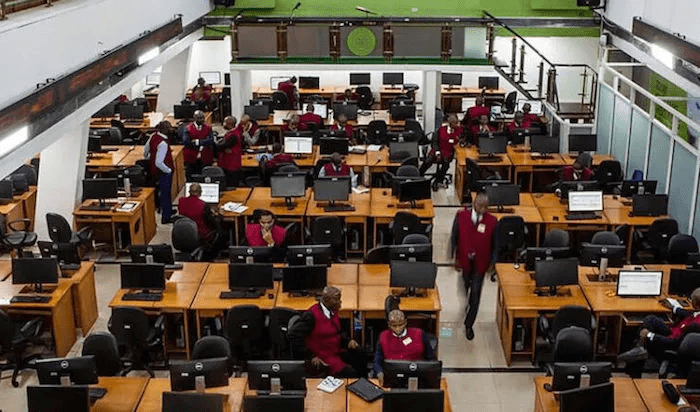
Kayode Tokede
Signalling significant excess liquidity in the financial system, banks’ deposits with the Central Bank of Nigeria (CBN) grew to N64.55 trillion, setting a record high in October 2025.
This represents a 27.2 per cent increase over the N50.73 trillion record set in September 2025.
Banks’ deposit excess cash with CBN via Standing Deposit Facility (SDF), while the CBN lend to banks through Standing Lending Facility (SLF) window to enable them meet critical overnight obligations with an interest rate as high as 24.9 per cent as of October 2025.
The financial data from CBN so far in 2025 showed that banks deposited more cash than they borrowed to underline excess liquidity in the financial system.
THISDAY analysis of CBN numbers showed that banks’ deposit with CBN between January -October 2025 stood at N210.74 trillion, representing an increase of 694.68 per cent from N26.52 trillion between January -October 2024.
Analysts attributed the growth to high credit risk concerns and a preference for the safety of the regulator window rather than lending into the real sector.
“With high benchmark rates for lending and borrowing, and concerns about credit risk and economic uncertainty, banks may prefer the relative safety of the SDF. It offers them a known return rather than extending credit into uncertain territory,” said Vice President, Highcap Securities Limited, Mr. David Adnori.
While banks eagerly placed excess funds with the apex bank, borrowing from the CBN slowed as pressures in the interbank market relaxed.
However, SLF requests settled at N995.5 billion in October 2025, about 30,9061per cent increase over N322million in September 2025.
The increase signalled a recovery in liquidity conditions and a more comfortable cash stance heading into 2026.
A further breakdown showed that SLF between January-October 2025 stood at N69.43 trillion, nearly 34 per cent drop from N105.19 trillion between January- October 2024.
Earlier in the year, SLF demand was relatively high at N24.8 trllion in February 2025, slightly before easing to N16.49 trillion in March 2025.
That mixed behavior showed that although system liquidity was strengthening, some institutions still required overnight support to rebalance their books.
No repo or reverse-repo transactions were recorded throughout 2025, indicating that the regulator did not need to deploy additional liquidity-management tools beyond its standing facilities.
Explaining the factors driving the cash glut, Adnori recalled that total credit to the private sector stood at N72.53 trillion in September 2025, down from N75.88 trillion in August 2025, and only slightly higher than N76.13 trillion in June 2025- as the CBN did not disclose July 2025 total credit to the private sector.
This stagnation, he said, suggests that banks are holding back on new lending despite having liquidity to spare.
Analyst said that the sharp surge in Nigerian SDF placements with the CBN, therefore, is more than a fleeting statistic.
“It captures a deeper tension between liquidity abundance and lending reluctance in the financial system. Beneath the numbers lies a complex web of caution, policy tightening, and an economy grappling with uncertainty. Banks are not acting irrationally. They are responding to signals from an environment marked by high inflation, exchange rate volatility, and weak consumer confidence,” he added.
Amid drop in MPR to 27 per cent, the CBN adjusted the standing facilities corridor around the MPR to +250/-250 basis points.
The applicable rates for the SDF and SLF in 2023 increased by 50 basis points to 11.50 and 19.50 per cent, respectively, following the hike in the policy rate by 50 basis points to 18.75 per cent in June 2023.
The interest rate at which banks borrow from CBN changed in 2024 amid the Monetary Policy Committee (MPC) hike in Monetary Policy Rate.
In 2024, the MPC members voted to increase interest rate from 18.75 per cent to 27.50 per cent in a bid to tackle inflation and unstable Naira at the foreign exchange market. However, the MPC of the CBN towards the end of September 2025 voted to reduce MPR by 50 basis points to 27 per cent, marking a significant shift to an expansionary monetary policy.
This move, which comes amid five consecutive months of sustained disinflation, aims to boost economic activity and address liquidity issues in the banking system. The decision was influenced by the fall in the inflation rate from 24.8 per cent in January 2025 to 18.02 per cent in September 2025.
The increase in SDF is coming on the back of CBN removal of the cap on the remunerable policy, among others.
The CBN governor, Mr. Olayemi Cardoso had disclosed that the apex bank removed the cap on the remunerable SDF to increase activity in the SDF window and manage liquidity.
CBN had maintained that the strong patronage at the SDF confirmed healthier liquidity in the banking system, stressing that banks and merchant banks were in search of better yields.
The current inflation rate in Nigeria is above yield on Treasury bills (T-Bills) and deposit money banks (DMBs) are looking for risk-free investments, which SDF has provided since MPR hike.
Speaking with THISDAY, Investment Banker & Stockbroker, Tajudeen Olayinka, attributed the surge in banks deposit with CBN to uncertainty in the business environment over rising insecurity, among others.
According to him, “The most significant factor is the increasing level of threat in the environment of business in Nigeria, arising from: insecurity, supply chain problems, rising inflation and poor purchasing power, low level of productivity, rising unemployment, liquidity overhang and paucity of risk-free financial instruments. As a result, most banks prefer to be debited by CBN for running short of LDR limit, as against extending credit to businesses that are finding it difficult to survive. It is all about managing risk.”


